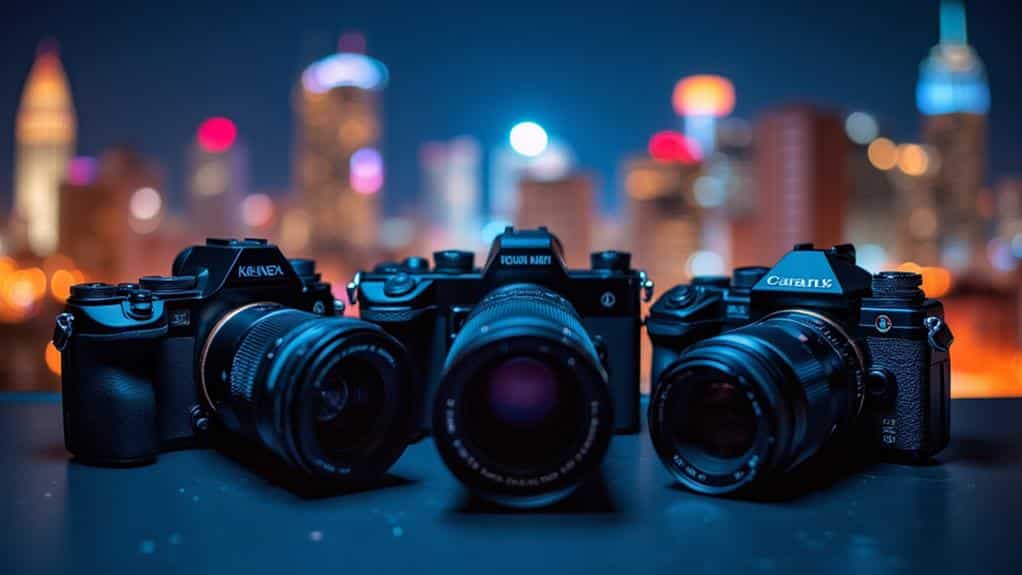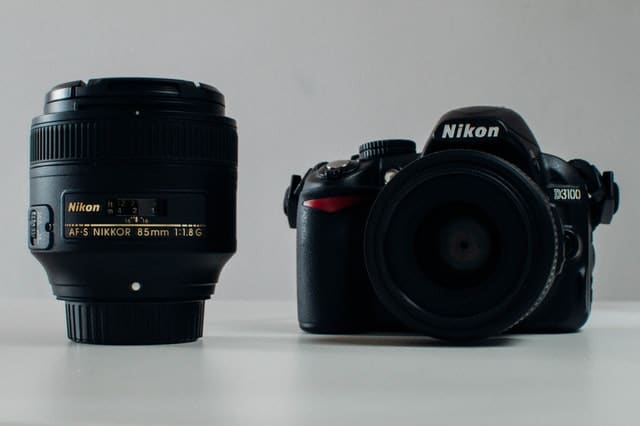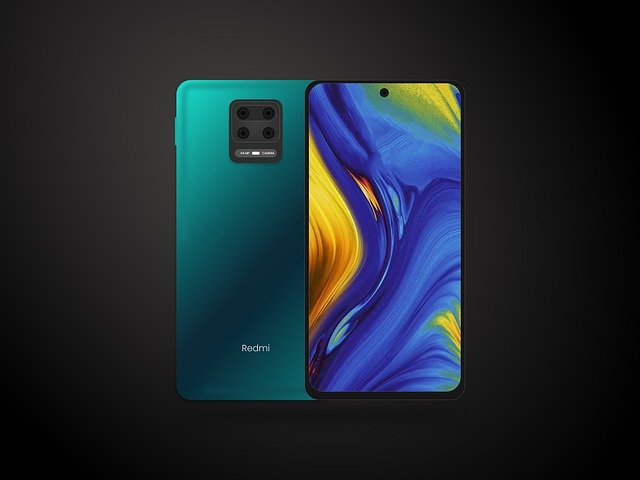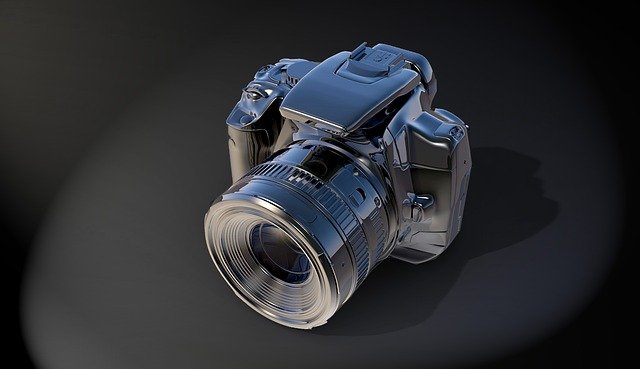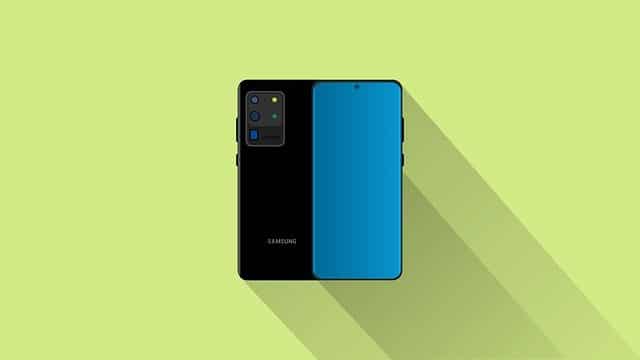When you're looking to capture stunning photos in low-light conditions, the right mirrorless camera makes all the difference. In 2024, the Sony Alpha 7R V, Canon EOS R7, and Sony Alpha 7 IV stand out as top contenders. Each has unique features tailored for challenging lighting, from advanced sensors to cutting-edge image processors. But which one truly excels beyond the others? Understanding the specific advantages of each will help you make an informed choice. Let's explore what sets these cameras apart and find which one suits your photography needs best.
Key Takeaways
- Sony Alpha 7R V: Features a 61.0 MP full-frame back-illuminated sensor and BIONZ XR engine, ensuring superior low-light performance and dynamic range.
- Canon EOS R7: Offers a 32.5 MP APS-C sensor with DIGIC X processor and 5-axis stabilization, ideal for low-light photography and vlogging.
- Sony Alpha 7 IV (Renewed): Includes a 33MP full-frame sensor and advanced BIONZ XR engine, providing excellent low-light capabilities and 4K 60p video.
- High ISO Ranges: Essential for low-light photography; consider cameras with ISO ranges from 51200 to 204800 for best performance.
- In-body Image Stabilization (IBIS): Look for 5-axis stabilization systems to reduce camera shake and ensure clear images in low-light conditions.
Sony Alpha 7R V Full-Frame Mirrorless Interchangeable Lens Camera
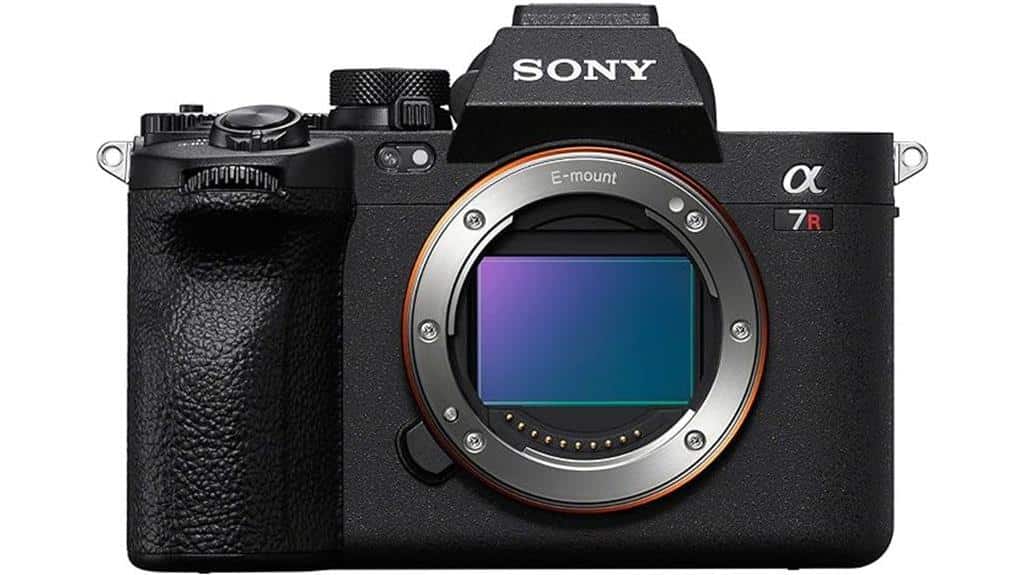
If you're a photographer aiming for unmatched image quality in low light, the Sony Alpha 7R V Full-Frame Mirrorless Interchangeable Lens Camera is a game-changer.
Its robust 61.0 MP full-frame back-illuminated Exmor R CMOS sensor guarantees exceptional image clarity, even in challenging low-light conditions.
The advanced BIONZ XR engine enhances processing speeds up to 8x, and the Real-time Recognition autofocus leverages AI for precise subject tracking. You can shoot continuously at 10 fps with AF/AE tracking.
Expect 15+ stops of dynamic range for superior detail.
Enhanced by 5-axis stabilization, dual SD/CFExpress slots, and significant video capabilities (8K 24p/25p, 4K 60p), this camera is built for professional-grade captures, addressing both stills and motion seamlessly.
Best For: Professional photographers and videographers seeking top-tier image quality, advanced autofocus features, and robust video capabilities.
Pros:
- Exceptional 61.0 MP full-frame sensor for high image clarity.
- Advanced AI-powered Real-time Recognition autofocus for precise subject tracking.
- 8K and 4K video capabilities with up to 10 fps continuous shooting.
Cons:
- High price point, making it a significant investment.
- Steep learning curve for new users due to its advanced features.
- Lack of GPS positioning for geotagging photos.
Canon EOS R7 Mirrorless Vlogging Camera with RF-S18-150mm Lens Kit
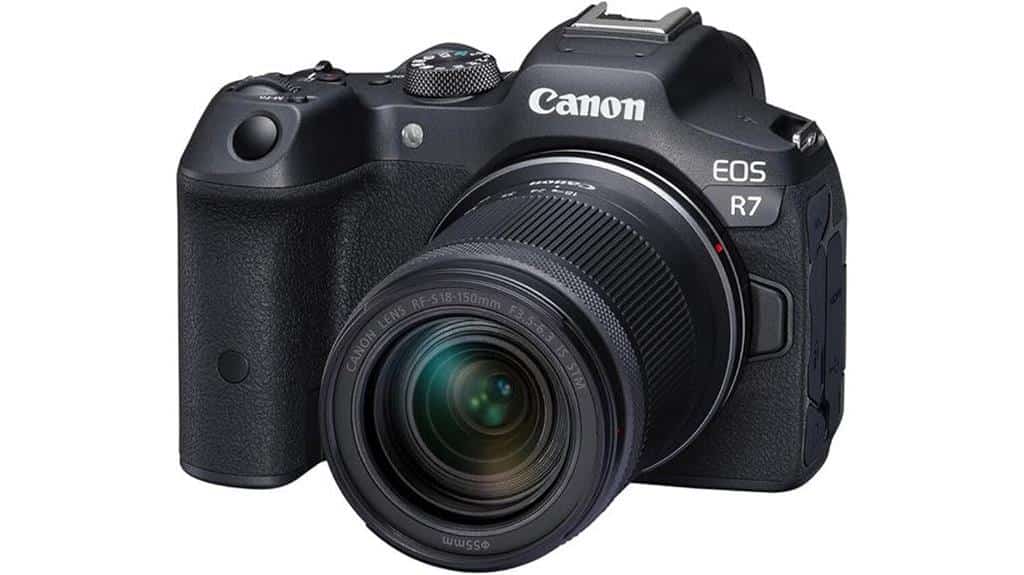
The Canon EOS R7 Mirrorless Vlogging Camera with RF-S18-150mm Lens Kit stands out for vloggers and photography enthusiasts who crave sharp, high-quality images in low light conditions.
You'll appreciate its DIGIC X image processor that guarantees exceptional photo and video quality. The 32.5 MP APS-C CMOS sensor captures crisp images, while 5-axis image stabilization offers 7 stops of shake correction.
You'll nail the perfect shot with its 15 fps continuous shooting and accurate Dual Pixel CMOS AF. Compatible with various lens mounts, this camera has you covered.
Its 4K 60p video capabilities, redundant dual UHS-II card slots, and ergonomic design make it a powerhouse for any content creator.
Included accessories like the battery pack and USB charger guarantee you're always ready to shoot.
Best For: Vloggers and photography enthusiasts who demand high-quality imaging and versatile video recording capabilities.
Pros:
- High-resolution 32.5 MP APS-C CMOS sensor for crisp, detailed images
- Advanced 5-axis image stabilization providing 7 stops of shake correction
- Multiple lens compatibility including RF-S, RF, EF, and EF-S mounts (with adapter)
Cons:
- Higher price point compared to entry-level cameras
- Requires optional Mount Adapter for EF/EF-S lenses
- Heavier than some other mirrorless cameras at 1.17 lbs
Sony Alpha 7 IV Full-Frame Mirrorless Camera with 28-70mm Zoom Lens Kit (Renewed)
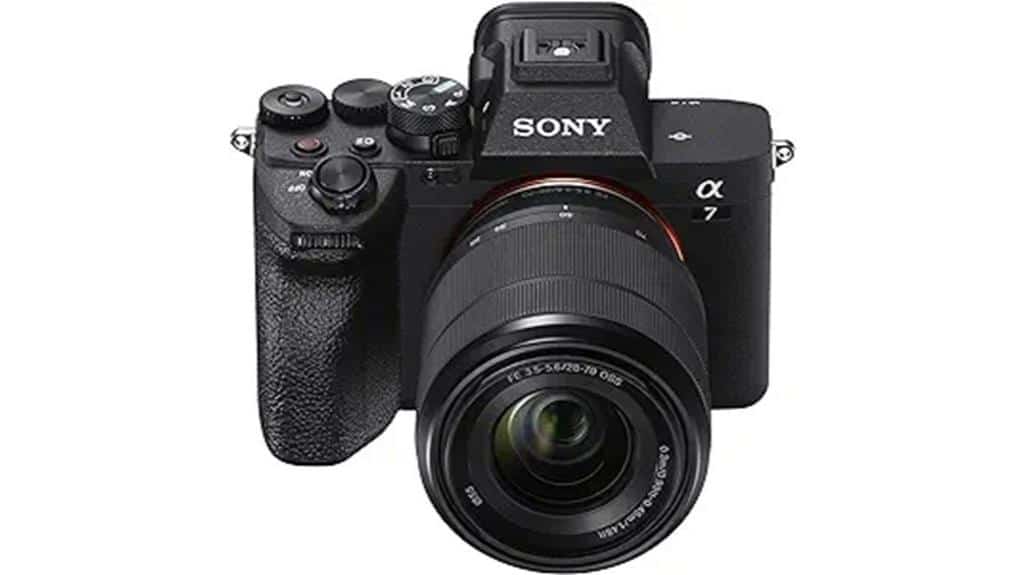
For photography enthusiasts and professionals seeking exceptional performance in low light conditions, the Sony Alpha 7 IV Full-Frame Mirrorless Camera with a 28-70mm Zoom Lens Kit (Renewed) stands out as a top-tier choice.
Equipped with a 33MP full-frame Exmor R back-illuminated CMOS sensor and an advanced BIONZ XR image processing engine, this camera guarantees impressive image quality.
You'll appreciate the 4K 60p 10-bit 4:2:2 recording capabilities and the 7K oversampling for stunning video.
Weighing 2.11 pounds, it's portable yet powerful.
Customer reviews highlight its low light prowess and robust features, despite one mention of a faulty unit.
Compared to the A7III, the A7 IV offers superior photo image quality, high ISO noise performance, and autofocus.
Best For: Photography enthusiasts and professionals seeking exceptional performance in both low light conditions and high-resolution video recording.
Pros:
- 33MP full-frame Exmor R back-illuminated CMOS sensor for excellent image quality.
- 4K 60p 10-bit 4:2:2 recording with 7K oversampling for stunning video.
- Advanced BIONZ XR image processing engine ensures powerful performance.
Cons:
- Weighs 2.11 pounds, which might be considered heavy for prolonged handheld use.
- As a renewed product, there may be occasional defects (e.g., a unit that doesn't turn on).
- Requires additional investment for Monster adapter to use Nikon F mount lenses.
Factors to Consider When Choosing 3 Mirrorless Cameras for Exceptional Low Light
When you're picking mirrorless cameras for exceptional low light photography, pay attention to sensor sensitivity ratings and image processing power.
Consider how well the camera handles dynamic range and autofocus in dim conditions.
Don't forget to check out stabilization techniques for shooting handheld in low light.
Sensor Sensitivity Ratings
Traversing low light photography means paying close attention to sensor sensitivity ratings. A higher ISO range is vital for capturing detailed images in dim environments.
Look for cameras that can reach ISO values between 51200 to 204800, as they offer superior adaptability.
Full-frame sensors generally outperform APS-C sensors in low light. For instance, the Sony Alpha 7R V, with its 61.0 MP full-frame back-illuminated Exmor R CMOS sensor, excels in capturing low-light scenes with minimal noise compared to the Canon EOS R7's 32.5 MP APS-C sensor.
This back-illuminated technology also enhances low-light capability by reducing noise and amplifying signal strength.
Consider the dynamic range when evaluating sensor sensitivity. A high dynamic range, exemplified by the 15+ stops in the Sony Alpha 7R V, guarantees that you can capture fine details even in shadows and highlights, pivotal for balanced low-light images.
Additionally, some cameras, like the Sony Alpha 7 IV, offer advanced noise reduction features such as multi-frame noise reduction.
These features can dramatically reduce noise, providing cleaner, crisper images in low light. So, selecting cameras with these attributes will greatly enhance your low light photography experience.
Image Processing Power
Choosing the right mirrorless camera for exceptional low light photography boils down to understanding its image processing power. When looking for a mirrorless camera that excels in low light performance, it’s important to consider the image processing power, as this will directly affect the camera’s ability to capture clear and detailed images in challenging lighting conditions. Additionally, photographers should also consider the camera’s ability to handle noise and retain image quality at high ISO settings. Some mirrorless cameras also offer compatibility with continuous lighting kit options, which can further enhance the camera’s ability to capture exceptional low light photography. These features can make a significant difference in the quality of the images produced, especially in low light situations.
A camera's processor is paramount as it determines how well your camera performs in challenging lighting conditions. More powerful processors like the BIONZ XR engine drastically reduce noise and improve image quality by boosting overall processing speed up to 8x.
This results in faster and more accurate image rendering, which is essential for capturing crisp, clear photos in low-light environments.
Additionally, advanced image processing enables features like 10-bit 4:2:2 video recording, offering a wider color gamut and greater tonal range for cinematic footage.
If you're into videography, this is a game-changer, allowing for richer, more dynamic videos.
Another essential factor is autofocus performance.
Powerful processors support advanced autofocus features such as Real-time Recognition AF and human movement autofocus, essential for maintaining sharp focus, particularly when shooting moving subjects in dim light.
Lastly, image processing power affects high-speed continuous shooting.
Cameras with elite processors can handle faster frame rates and provide more accurate autofocus tracking, essential for capturing action shots in low light.
Consequently, investing in a camera with potent image processing power is key for exceptional low light photography.
Dynamic Range Capabilities
Dynamic range capabilities substantially impact your ability to capture detailed, well-balanced images in low-light situations.
A camera's dynamic range refers to how well it can capture various tones, from the brightest highlights to the darkest shadows. With 15 stops or more being considered excellent, higher dynamic range allows for more detail in these areas, giving you a more natural and nuanced representation of your scene.
When selecting a mirrorless camera for low-light photography, look for models with at least 12 stops of dynamic range.
This baseline guarantees better image quality in challenging lighting conditions. For instance, cameras with back-illuminated sensors like the Sony Alpha 7R V offer improved dynamic range due to their advanced design. Such features are vital for enhancing the depth and detail in your images, especially when shooting in high-contrast environments.
Consider options like the Sony Alpha 7 IV, which boasts up to 15 stops of dynamic range.
This high capability makes it well-suited for capturing high-contrast scenes in low light, guaranteeing that you won't lose essential details to overexposure or underexposure. Prioritize dynamic range when evaluating your camera options to enhance your low-light photography.
Autofocus Performance
While dynamic range plays a key role in capturing detailed low-light images, autofocus performance can make or break your shot.
An exceptional low-light mirrorless camera should feature advanced autofocus technologies like Real-time Recognition autofocus with deep learning AI. This technology allows your camera to quickly and accurately lock focus even when lighting conditions are far from ideal.
A major factor to weigh is the number of phase detection points. Cameras boasting higher counts, such as 693 phase detection points, can dramatically improve autofocus accuracy.
This means you'll spend less time hunting for focus and more time capturing stunning images.
Moreover, advanced autofocus systems that offer subject detection capabilities tailored to humans, birds, animals, and more, enhance your ability to track various subjects in low light.
This can be a lifesaver when you're photographing unpredictable subjects in challenging conditions.
Remember, the camera's processing power also affects autofocus performance.
Fast processors like the BIONZ XR engine greatly accelerate focus acquisition time, ensuring you don't miss critical moments.
Lastly, ponder models equipped with Dual Pixel CMOS AF.
This system excels at maintaining accurate focus and tracking moving subjects, making it an invaluable tool for low light photography.
Stabilization Techniques
When you're aiming to capture impeccable low-light photos, in-body image stabilization (IBIS) acts as your guiding light, reducing camera shake and blur.
To get the best possible results, prioritize a mirrorless camera with 5-axis stabilization. This advanced system combats pitch, yaw, roll, as well as X and Y axis movements for thorough image correction.
Sensor-shift technology is another game-changer. By moving the image sensor to counteract camera movement, it works wonders in conjunction with lens-based stabilization.
You might encounter systems that offer coordinated control, combining both in-body and lens-based stabilization. This powerful pairing can deliver up to 7 stops of shake correction, making handheld shots in dim environments much sharper.
When you're considering specific models, look for cameras where the stabilization system operates seamlessly with electronic shutter modes.
You'll capture those low-light scenes silently, perfect for settings where discretion is key.
Choosing the right camera with these stabilization techniques confirms that your low-light photography doesn't suffer from unwanted blur.
Embrace these features, and watch your night-time shots flourish with clarity and detail.
At a Glance
To wrap it up, you can't go wrong with these three stellar choices for low-light photography in 2024. The Sony Alpha 7R V dazzles with its 61.0 MP sensor, the Canon EOS R7 delivers crisp images with its advanced APS-C sensor, and the Sony Alpha 7 IV combines stunning imaging and video capabilities. Consider your specific needs, like sensor size and lens options, to pick the camera that's perfect for you. Happy shooting!

